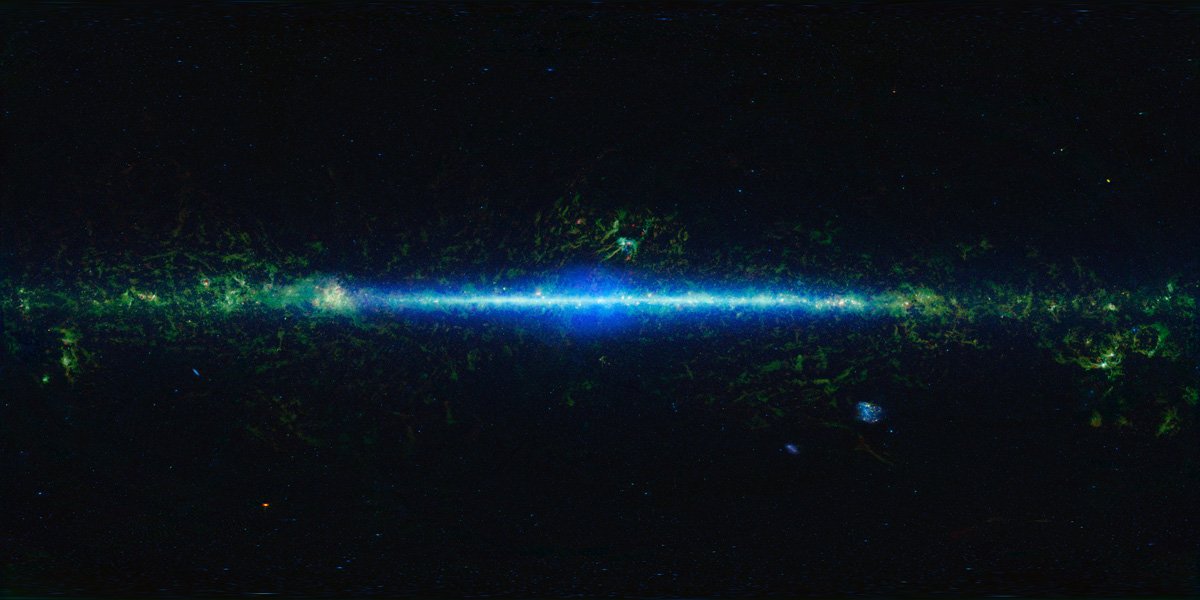We're open daily! View holiday hours
Science News
WISE Sky
March 15, 2012

Okay, astronomy geeks, get ready to spend hours poring over images and data! NASA just released a new atlas and catalog of the entire infrared sky showing 563,921,584 stars, galaxies and other objects captured by the Wide-field Infrared Survey Explorer (WISE) mission.
Got some free time?
WISE launched in December 2009, and mapped the entire sky in 2010 with vastly better sensitivity than its predecessors. It collected more than 2.7 million images taken at four infrared wavelengths, capturing everything from nearby asteroids to distant galaxies. Since then, the team has been processing more than 15 trillion bytes of returned data.
The individual WISE exposures have been combined into an atlas of more than 18,000 images covering the sky and a catalog listing the infrared properties of the half a billion individual objects found in the images. (You can access the catalog through this site and view a zoomable mosaic of the entire WISE sky here.)
WISE observations have led to numerous discoveries, including the elusive, coolest class of stars. Astronomers hunted for these failed stars, called Y dwarfs, for more than a decade. Because the Y dwarfs have been cooling since their formation, they don’t shine in visible light and could not be spotted until WISE mapped the sky with its infrared vision.
WISE also took a poll of near-Earth asteroids, finding significantly fewer mid-size objects than previously thought. It also determined NASA has found more than 90 percent of the largest near-Earth asteroids.
At least 100 papers on the results from the WISE survey already have been published. More discoveries are expected now that astronomers have access to the whole sky as seen by the spacecraft.
“With the release of the all-sky catalog and atlas, WISE joins the pantheon of great sky surveys that have led to many remarkable discoveries about the universe,” says Roc Cutri, who leads the WISE data processing and archiving effort at Caltech. “It will be exciting and rewarding to see the innovative ways the science and educational communities will use WISE in their studies now that they have the data at their fingertips.”
If you still want more, all of the WISE images released to date are available here.
NASA/JPL-Caltech/UCLA